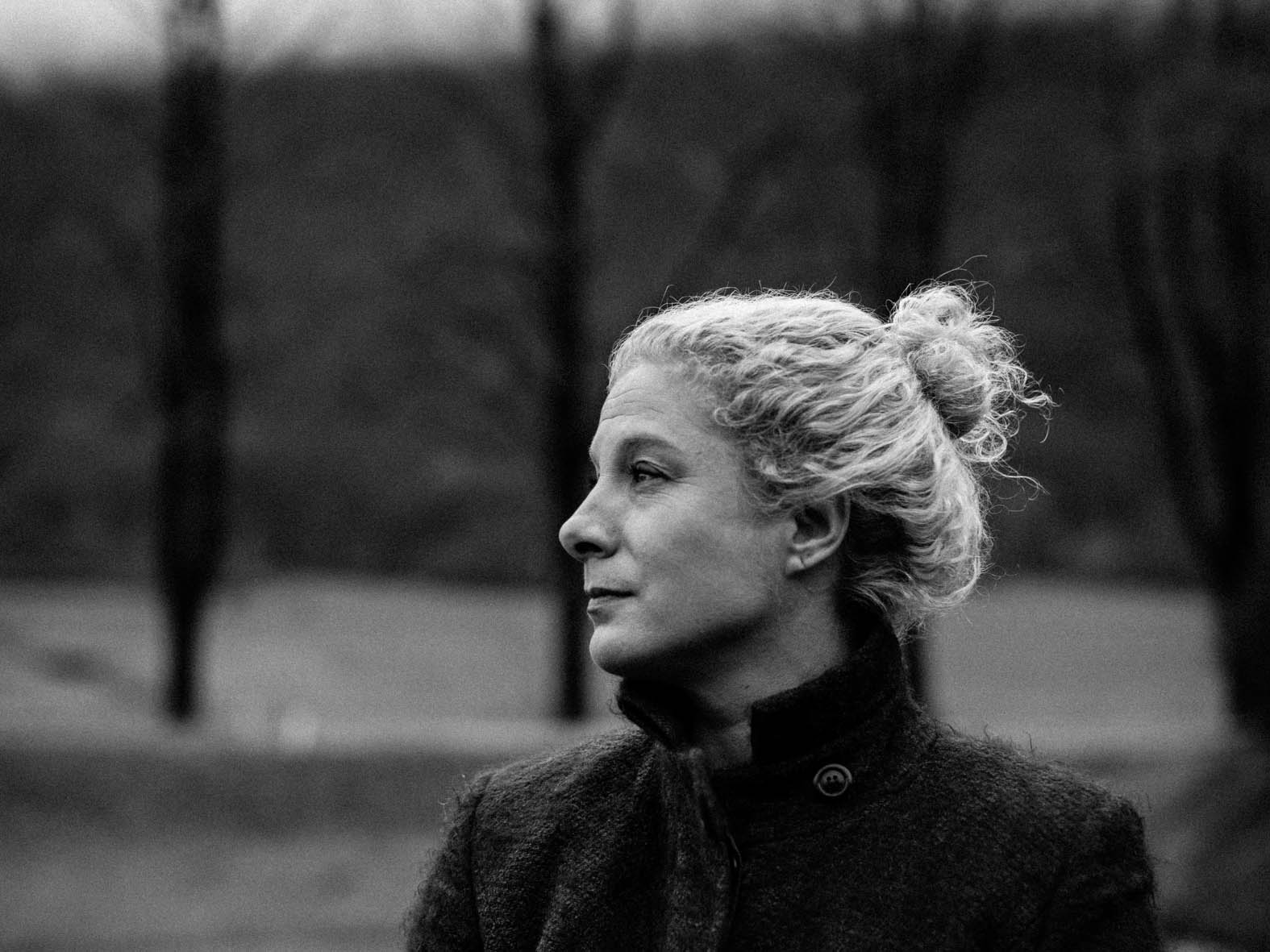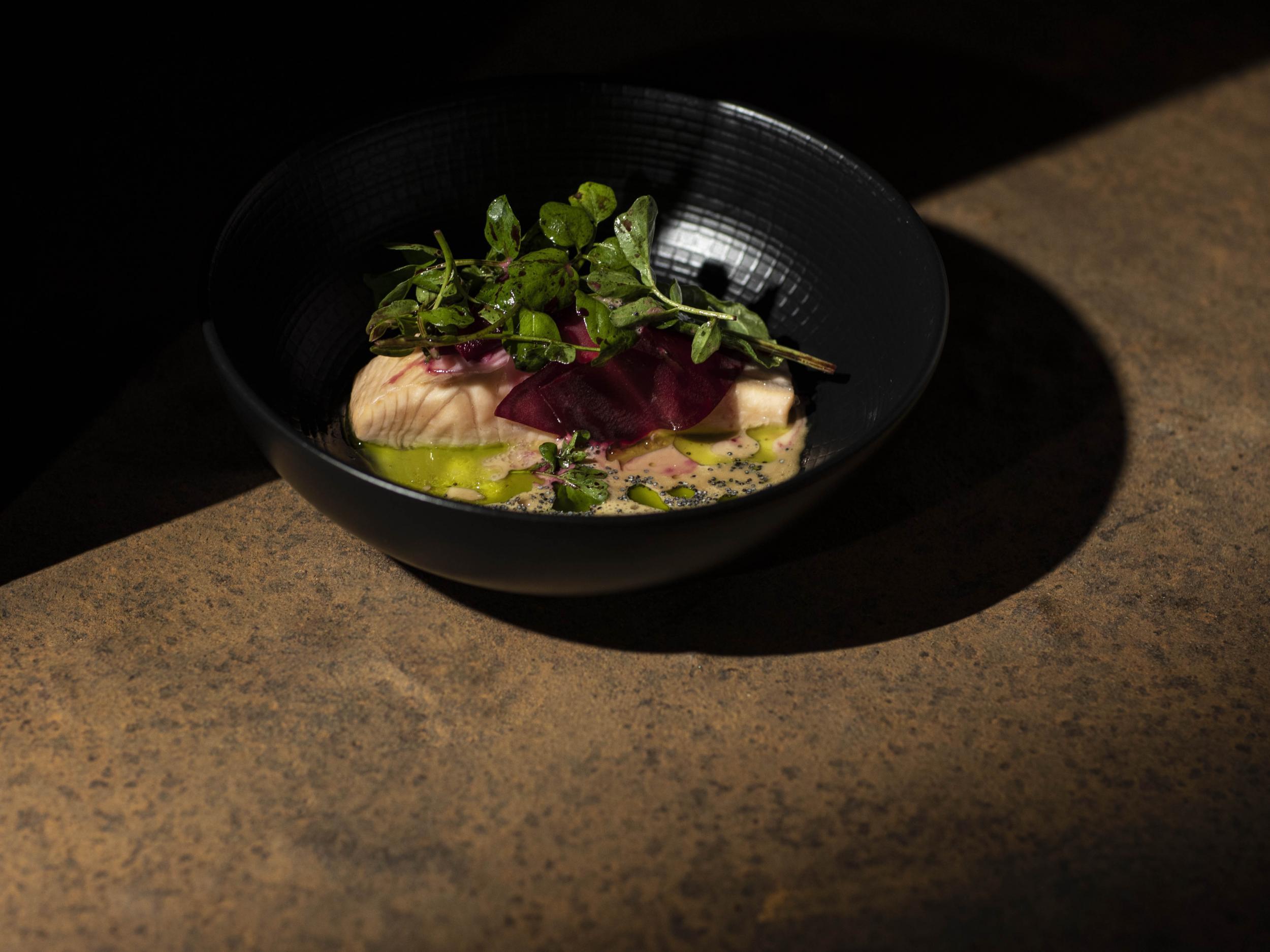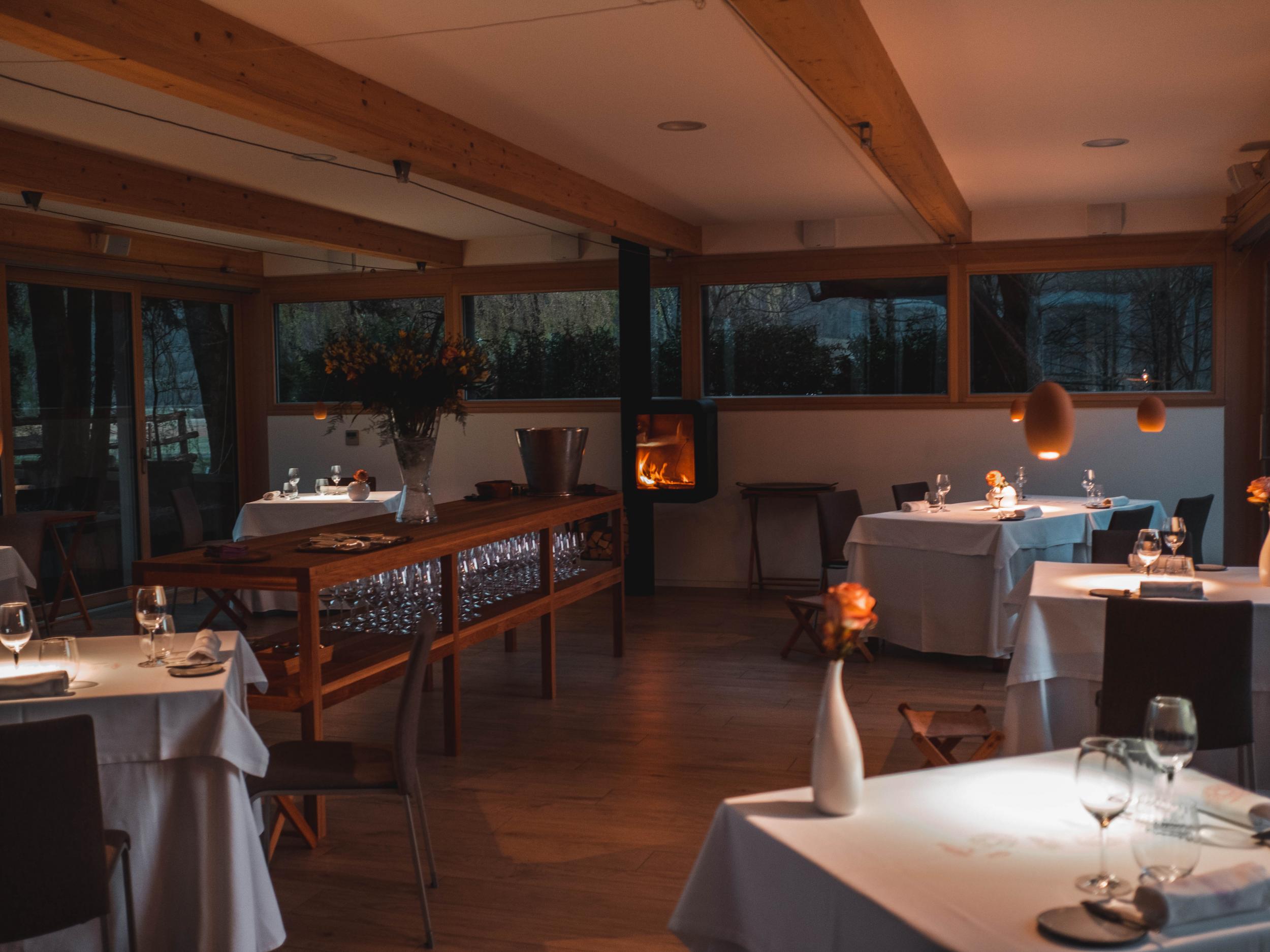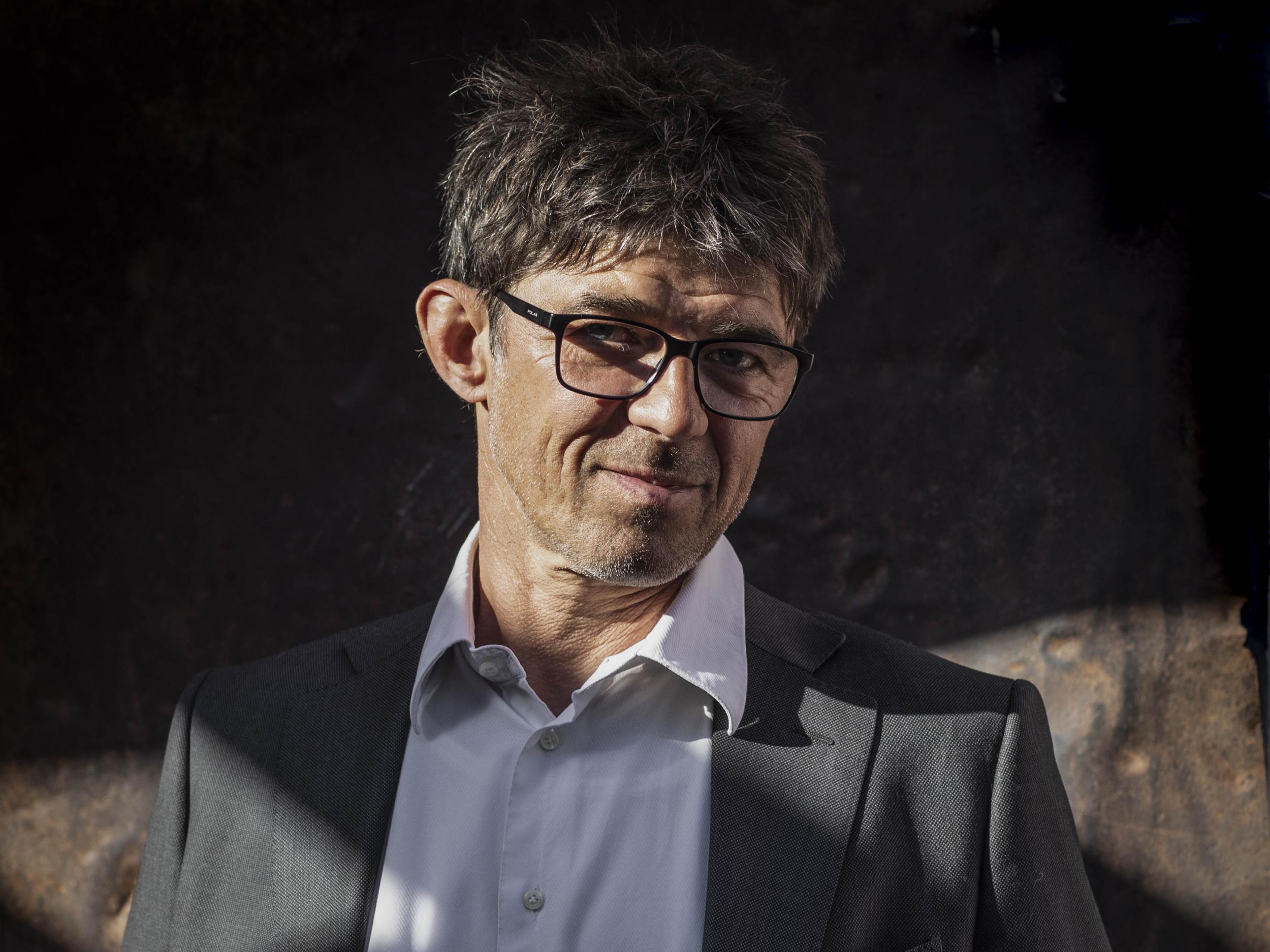The Independent's journalism is supported by our readers. When you purchase through links on our site, we may earn commission.
Chef Ana Ros: How Slovenian local produce rivals France’s history of fine dining
You may recognise her from Netflix’s ‘Chef’s Table’ which helped put the country on the culinary map, but as Clare Finney finds out (via zoom), there is much more for the world to learn about its cuisine

“To our left, we are cutting grass. You can smell the wild herbs in the air. Behind us,” Ana Ros gestures, “is the mountain from which you can spot almost all the places we source our ingredients from.”
Squinting slightly in the spring sunlight, the chef and proprietor of Hisa Franko smiles.
She doesn’t need to point out what’s in front of her: it’s me and a few other writers, brought all the way to her restaurant in the Slovenian mountains via the medium of Zoom.
We’re there – in so far as any of us can be anywhere other than here, on our laptops, these days – courtesy of the Slovenian Tourist Board, who are keen to spread the word on their country’s cuisine ahead of it being the European Region of Gastronomy in 2021.
In normal circumstances, we’d be standing in her beautiful restaurant garden, literally; her husband, the sommelier Valter Kramar pouring the natural, low-intervention Slovenian wine while we sample a taste of her globally renowned cooking – but with circumstances being anything but normal, we are making do with zoom.
We can still see the wine though, and the lush mountain pastures, and hear birdsong chirping in the air – a reminder that some things, at least, remain unfazed by coronavirus. In Britain, tragedy and chaos continue to rage – but in this moment, in this little slice of Slovenia, the natural circles of life which have fuelled Hisa Franko’s food and philosophy go on.
Around 95 per cent of Ros’s suppliers can be found within 50km of the restaurant; the result of years spent “knocking on the doors of tiny farmers and producers, asking them to share their products with us, building up a chain that is really regional”.
Everywhere you visit you will see people pickling, fermenting, preserving. People here know how to eat from nature
It is this sense of splendid isolation that has both shielded the Soca Valley from the worst of the pandemic, and resulted in the resplendent biodiversity upon which Hisa Franko’s (and much of the country’s) extraordinary cuisine is founded.
When Ros first took the reins – 30 years old, pregnant, with no chefs training or experience and little means of attaining it – this bounty and her own dogged creativity was all she had to fall back on. “We are so far away from anywhere, globalisation hasn’t really touched us. Nowhere in the world can you find these ingredients or traditions.”
Ros likens their valley, and other such remote areas of the country, to being “like a zoo of rare animals”. Their produce – herbs, flowers, vegetables, game – but also their processes around wine, bread, fermenting and cheesemaking “are all local from beginning to end”.

The Tolminc cheese, for example – a favourite of Ros’s – dates back to the 16th century. The cows, their forage and the method of production is unique to the Soca Valley. Their sourdough bread, baked by Hisa Franko’s head baker Natasa Djuric, contains heritage grains from their local famers: rye, buckwheat and einkorn. “This is not perfect bread in the tradition of French baking. It is one that fits us,” Djuric tells us from her position at Ros’s right hand at their table – my left on the screen.
We are melting pot here. The scenery, the culture – even the language is different across Slovenia, so you can just imagine the kitchen
Her challenge, Hisa Franko’s challenge – the challenge of all those in Slovenia’s food over the next seven months – is to “tell our story. To incorporate Slovenia into the food we create and the message we send out to the world”. When Hisa Franko, along with the rest of the country’s restaurants, were forced into lockdown, Ros decided now was the time to fulfil her dream of creating food boxes that she could send across Europe – and beyond – and did exactly that.
Over the past month cheeses, pasta, pestos, crackers, jams and Djuric’s sourdough bread and more have been available to order, incorporating such esoteric ingredients as Matajur nettles, fermented cottage cheese, sweet sour pickled pumpkin and mountain whey.

The reason Slovenian gastronomy rests on products like these, rather than a grand historic tradition of fine dining a la France, is because it has none: up until 1991, Slovenia was part of communist Yugoslavia. “We didn’t have an aristocracy or elite class who would visit restaurants or dining rooms,” Ros explains.
In 2006 when Ros attended an international culinary conference on “the future stars of gastronomy”, she represented “a place no one had really heard of before”, to the extent that there were (and still are) preconceptions about Slovenian food. The one that keeps popping up is that the cuisine is “more Austrian – sauerkraut and sausages – when in fact, while there are sausages, there is something Mediterranean to our diet too”: a range that reflects Slovenia’s multiple borders with Austria, Italy, Croatia and Hungary.

“We are melting pot here. The scenery, the culture – even the language is different across Slovenia, so you can just imagine the kitchen,” Ros continues. Asked to identify the most defining characteristic of Slovenian cuisine, she gestures again to the pastures behind her. “I think what defines Slovenia most is just ‘green’. Everywhere is green. Even in the capital city there are green zones. Everywhere you visit you will see people pickling, fermenting, preserving. People here know how to eat from nature.”
Though Ros and her team (with a fair bit of help from the Netflix series Chef’s Table, which ran an episode on Hisa Franko in 2016) have done much to put Slovenia on the culinary map, there is so much more for the world to learn.
“We took a long time to understand it ourselves; to understand how to communicate it,” says Kramar, who has faced similar challenges with Slovenian wine. “But when people are sat at our table, eating and drinking, they know who we are.” It’s way of being; of respecting nature and working in harmony with it to produce something unique, yet universal too.
“This” Ros gestures again, seemingly to the pandemic – “will end, but there will be other big challenges to gastronomy in the future, from climate change to hunger. It needs to learn lessons about investing in the land, adapting and observing.” This is why being European Region of Gastronomy in 2021 is so important – because what Slovenian cuisine offers in the way of lessons and flavours can’t really be communicated via recipe spreads or even Zoom.
'Ana Ros: Sun and Rain' is out now
Join our commenting forum
Join thought-provoking conversations, follow other Independent readers and see their replies
Comments